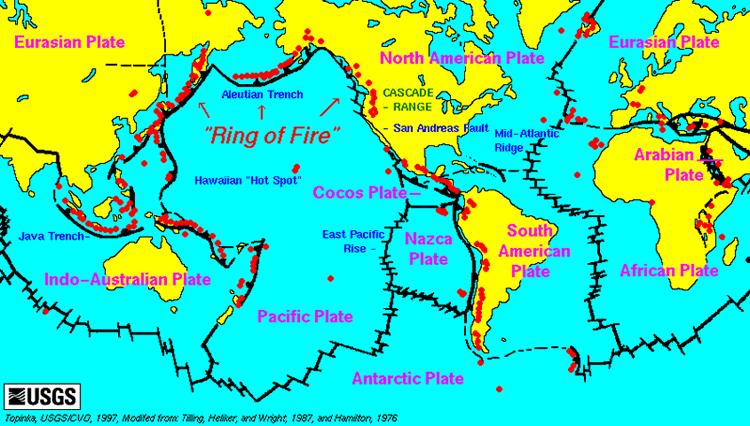 username@email.com
username@email.com
In the next lesson, we will cover the more complex components of our planet Earth, its magnetism, plate tectonics, and structural geology.
In the previous lesson, we reviewed the important basic components of our Earth, its geological processes, and how to map features of Earth’s topography.
If you hold a compass in your hand (which is really just a magnet free to turn on its axis) it would point north because of the magnetic lines of force on the Earth. It would point to a place 1600 miles apart from the actual designated North Pole. The geologic record provides evidence that this magnetic north actually wanders over time. As magnetic (iron based) minerals (magnetite) cool in rocks they point to different places at different times. There is no clear explanation for the variation over time. One influence on the earth’s magnetic field is the regular flares produced by the sun. Much research is needed to confirm existing theories about these relationships.
There are six major plates (and more than a dozen minor plates) of lithosphere that are about 50 miles thick and almost float on top of the asthenosphere which is believed to be a very viscous liquid-like layer of the Earth. These plates grind and push against each other at some margins while they pull apart at others. These compressional forces are what are believed to cause earthquakes, volcanoes, and mountain ranges.

Plate tectonics and active volcanoes
The elastic rebound theory explains how earthquakes most likely occur. The idea is that earthquakes are the result of an elastic rebound of previously stored potential energy in the form of tectonic built-up strain. Initially, there is a strain at a fault line between two rock faces with different directional forces. This elastic strain energy is stored over a period of time (usually very long periods of time, since plates move relatively slowly) and increases until it finally bursts the threshold of the sheering forces that contain it. The resulting shift creates waves of vibrations we call an earthquake and may repeat until the equilibrium is restored. The stored energy may be released as heat, deformation of the rock, or elastic waves. The elastic rebound theory is now our best explanation of how and why earthquakes happen.